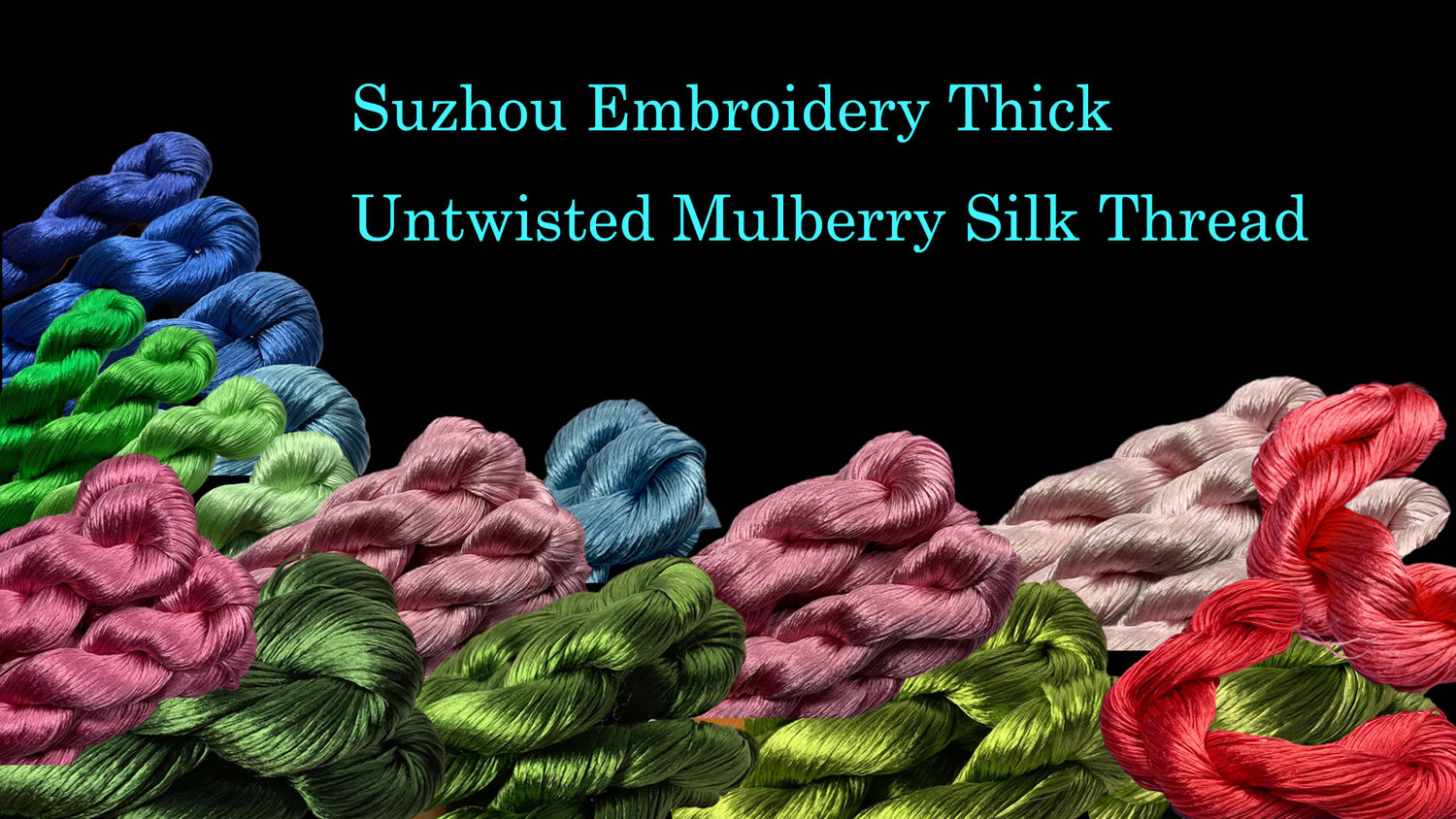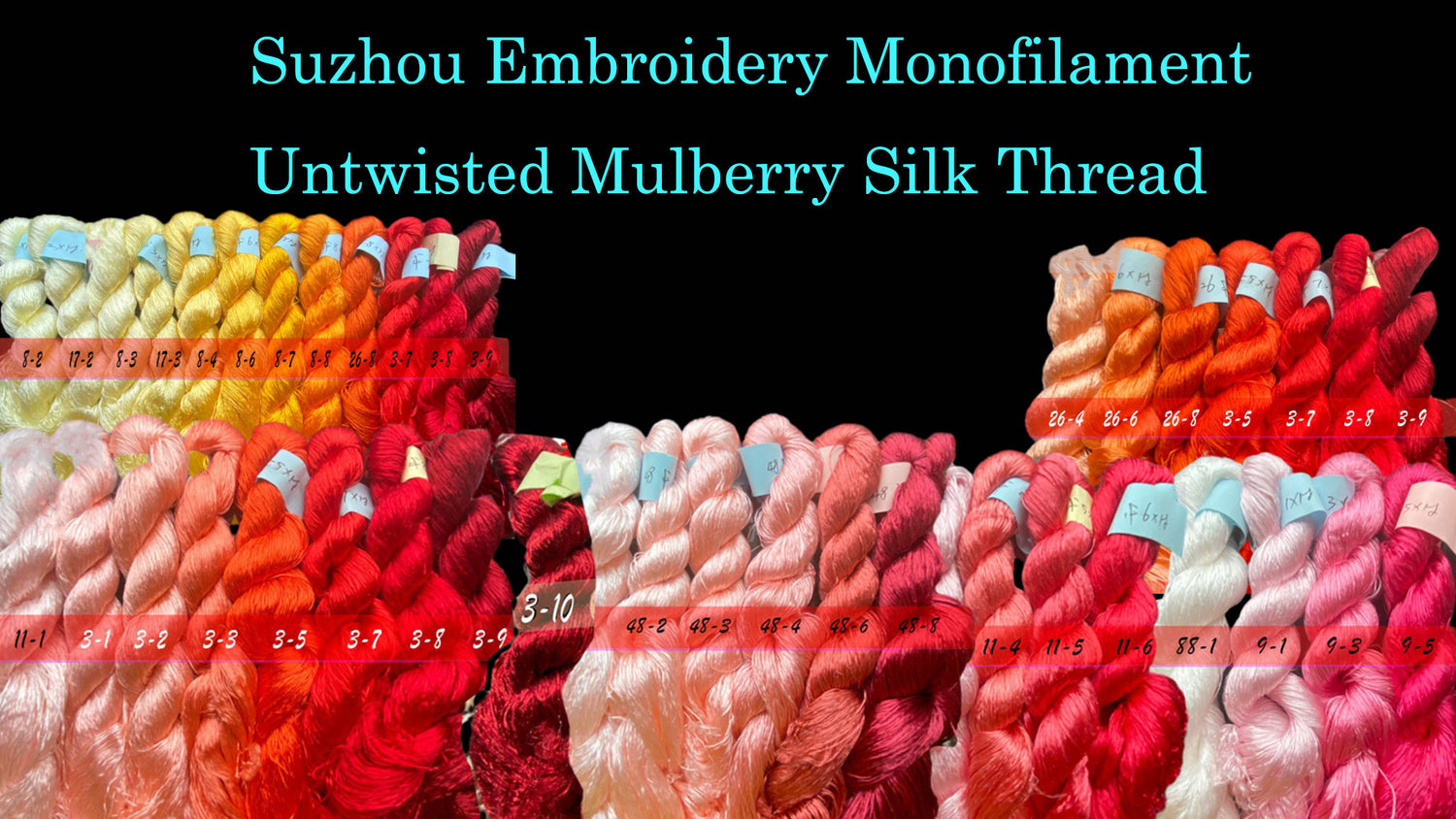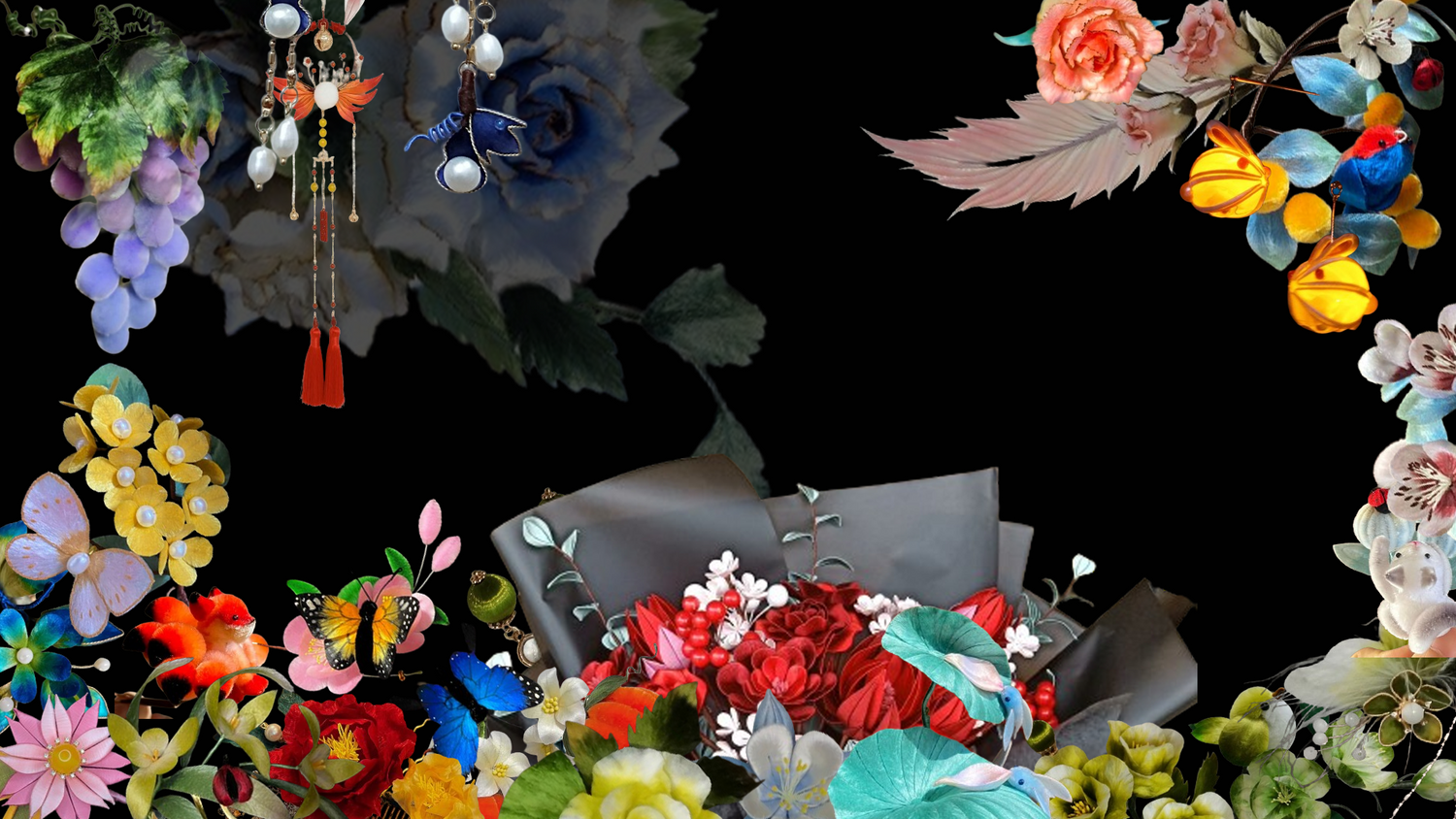
How to Make Filigree Ginkgo Hairpin - Handcraft Ronghua Tutorial
Share
In this case study, the "ginkgo" is used as a design element for Ronghua jewelry. Innovatively, blue is chosen as the main color and combined with the filigree technique to create a unique ginkgo hairpin.
 Color Scheme Display
Color Scheme Display
A. Preparing Velvet Strips
 1
1
1. Prepare the velvet row needed to make the ginkgo leaves. This case study features blue gradient ginkgo leaves, with colors transitioning from dark in the center to light on the sides. The transition can be symmetrical or asymmetrical; this case uses an asymmetrical design.
 2
2
2. Wind the velvet; the overall width of the velvet row should be 6.5-7 cm. Then cut the velvet strips to a width of 1.8-2 cm.
B. Trimming and Shaping
 3
3
3. Take a velvet strip, trim both ends, then cut it in half. Use a clamp to flatten the strip and apply setting liquid. Let it dry for later use.
 4
4
4. Single velvet pieces are too small to make ginkgo leaves, so we can join two pieces together. Cross two pieces, align their bases, and apply white glue to the overlapping area to secure them. Then, use a clamp to flatten the joined pieces. This size is suitable for making ginkgo leaves.
C. Filigree
 5
5
5. Take a 0.2 mm copper wire and fold it in half (the ginkgo leaf edges have many details, so a thinner wire is better for creating these details). Twist the wire a few times by hand, then place it on a wire twister to create a braided wire. Note: when twisting, raise the upper wooden board and use the narrowest side. Ensure the twisted wire extends beyond the edge of the upper board to prevent it from unraveling.
 6
6
6. Draw a ginkgo leaf pattern on paper. Using tweezers, shape the wire according to the pattern, pressing the wire down firmly to maintain the shape accurately. Once shaped, secure it with silk threads.
D. Creating Filigree Velvet Pieces
 7
7
7. Place the ginkgo leaf-shaped wire on the velvet piece, ensuring the wire does not extend beyond the velvet. Use white glue to fix the wire to the velvet, then embed the wire into the velvet with a clamp. Once secured, bind the velvet and wire handle together with silk threads.
 8
8
8. Trim any excess velvet outside the wire with scissors, and wrap the wire handle with silk threads to form the ginkgo leaf stem.
 9 10
9 10
9. Dip a detailing brush in gold ink and outline the leaf veins on the velvet piece. This completes one filigree ginkgo leaf.
10. Make two more filigree ginkgo leaves using the same method.
E. Creating Decorative Parts
 11
11
11. Prepare half-hole beads of different sizes. Use a small amount of glue to fix 0.8 mm copper wires to the beads, then wrap the wires below the beads with silk threads. Make four such components.
 12
12
12. Take a 0.4 mm copper wire and wrap it with silk threads to create long branches. Make two such branches.
F. Assembling the Flower
 13
13
13. Arrange all the components according to the final design, determining the approximate positions of each part.
 14
14
14. Secure the components together with silk threads, adjusting the positions, angles, and curves of each part as needed during the process.
 15
15
15. Trim any excess brass wires and choose a main accessory to fix the ginkgo branch onto, completing the creation.
 16
16
16. Finished product display.








1 Kommentar
請問可以購買書嗎?